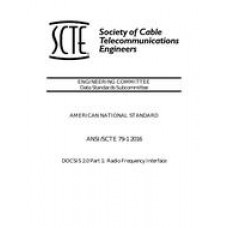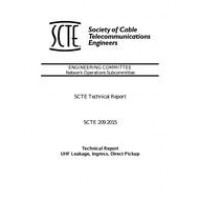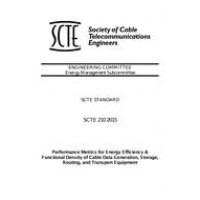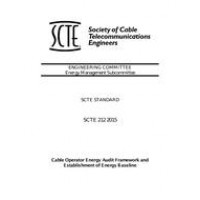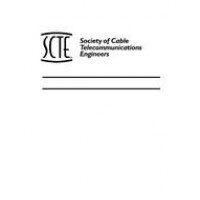SCTE 79-1 2016
- DOCSIS 2.0 Part 1: Radio Frequency Interface
- standard by Society of Cable Telecommunication Engineers, 2016
- Category: SCTE
$50.00
$25.00
There are differences in the cable spectrum planning practices adopted for different networks in the world. Therefore, two options for physical layer technology are included, which have equal priority and are not required to be inter-operable. One technology option is based on the downstream multi-programme television distribution that is deployed in North America using 6 MHz channelling, and supports upstream transmission in the 5-42 MHz region. The other technology option is based on the corresponding European multi-programme television distribution and supports upstream in the 5-65 MHz region. Both options have the same status, notwithstanding that the document structure does not reflect this equal priority. The first of these options is defined in Sections 4, 6, and 7, Annex G, and Annex C.1.1.1, whereas the second is defined by replacing the content of those sections with the content of Annex F. Correspondingly, [ITU-T J.83-B], [CableLabs1], and [SMS] apply only to the first option, and [EN 300 429] only to the second. Compliance with this document requires compliance with one or other of these implementations, not with both. It is not required that equipment built to one option shall inter-operate with equipment built to the other.
These optional physical-layer technologies allow operators some flexibility within any frequency planning, EMC and safety requirements that are mandated for their area of operation. For example, the 6 MHz downstream-based option defined by Sections 4, 6, and 7 might be deployable within an 8 MHz channel plan. Compliance with frequency planning and EMC requirements is not covered by this specification and remains the operators? responsibility. In this respect, [FCC15], [FCC76], and [EIA-S542] are relevant to North America and [EN 50081-1], [EN 50082-1], [EN 50083-2], [EN 50083-7], and [EN 50083-10] are relevant to the European Community.
The option of Sections 4, 6, and 7, together with Annex G and Annex C.1.1.1, is required to be backwards compatible with an earlier version of that technology [SCTE 22-1], whereas the option of Annex F was not included in [SCTE 22-1] and therefore is not required to be backwards compatible with [SCTE 22-1].
Any reference in this document to the transmission of television in the forward channel that is not consistent with [EN 300 429] is outside the normative scope as only [EN 300 429] is used for digital multi-program TV distribution by cable in European applications.
Requirements for safety are outside the scope of the present document. Safety standards for European applications are published by CENELEC.
Note 1: Examples of such CENELEC product safety standards are [EN 60950] and [EN 50083-1].
Note 2: For CENELEC safety categories of interfaces, see [EG 201 212].
 PDF
PDF
All of our standards document are available in PDF (Portable Document Format), an electronic, downloadable format.You will be able to download the file in your account downloads.
 Multi-User Access
Multi-User Access
After purchasing, you have the ability to assign each license to a specific user.
 Printable
Printable
At any time, you are permitted to make printed copies for your and your members' reference use.

